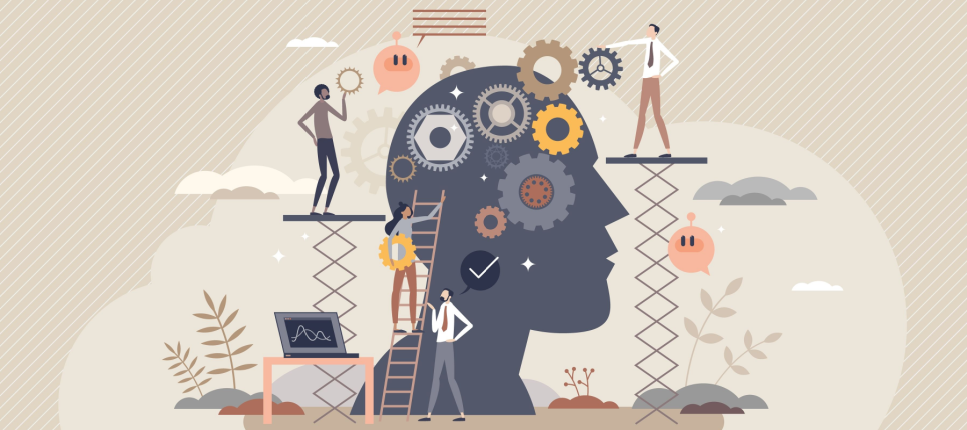We all use it daily, more or less consciously, and developing it is one of the best ways to improve the quality of our learning. It is called “metacognition,” a notion that the American psychologist John H. Flavell was the first to name in his work in the 1970s and to set out the theoretical foundations still considered today. For Flavell, metacognition “refers to one’s knowledge concerning one’s own cognitive processes or anything related to them. It also refers to the active control, regulation and orchestration of these processes.”* Several other academics have explored the notion after him and contributed to its understanding and possibilities. Here are ten points to better understand it!
- “Cognition” refers to all the processes related to our mental faculties: attention, reasoning, memorization, conceptualization, etc. In short, it allows us to acquire information about our environment and interpret it to regulate our behaviour. The prefix “meta” means not only to go “beyond” (cognition), but it also evokes reflection, participation, succession and change.
- Metacognition is distinguished from cognition by the conscious or controlled nature of the processes involved and by the semantically penetrable aspect of the domain in question (Yzerbyt, Lories, & Dardenne, 1998).
- Metacognition is not a simple action on cognition, but a process of reflection, verbalized or not, that the learner sets in motion when he perceives the environment as a problem to be solved. Through this process, the learner must also make sense of the environment in question.
- Like cognition, however, metacognition involves not only our mental faculties but also our motivation and emotions.
- Metacognition allows us to identify our mistakes and successes and understand their origins.
- It is developed in childhood but can be improved throughout our lives.
- It is mobilized whenever we try to learn something new that goes beyond simple automatism; in other words, in any task that requires planning or self-examination.
- It can be used for both abstract and concrete (so-called “manual”) tasks. In the latter case, we often give the example of assembling a piece of furniture in kit form, a task that requires us to reactivate our knowledge and skills in assembling furniture and to plan it, to a certain extent, in order to be able to carry it out successfully (achieve a goal).
- It is sometimes associated with the idea of “learning to learn,” but it is more accurately summarized as a set of “cognitions about our cognitions” or “knowing our own cognitive processes.”
- By developing our metacognitive skills, we can hope to improve the quality of our learning as well as our autonomy as learners, two important assets for success in self-study and online learning.
*Flavell quoted by Doly, 1997.
Our detailed article on this subject:
Related articles:
- Metacognition in 3 Questions
- Develop Your Metacognitive Skills
- Studying Like a Pro. Test Your Knowledge!
- Neuroscience: 3 Mistakes to Avoid When Studying
- 8 Proven Tips for Optimal Learning
- Neuroscience: learning in 4 steps
- Stress and memory
- 5 Factors Influencing Memory Process
- Our two short-term memories
- Long-Term Memory: Its 3 Chronological Processes
- Are we really good at multitasking?
- Attention, in numbers
- At the very heart of the feeling of personal effectiveness
- The Learner and The Feeling of Self-Efficacy
- How to help your brain “unplug”
- The importance of emotions in learning
- 4 emotions of learning
- Online training in empathic mode
- Self-Training 101
- Self-Training: The Evolution of a Fundamental Concept
Author:
Catherine Meilleur
Communication Strategist and Senior Editor @KnowledgeOne. Questioner of questions. Hyperflexible stubborn. Contemplative yogi
Catherine Meilleur has over 15 years of experience in research and writing. Having worked as a journalist and educational designer, she is interested in everything related to learning: from educational psychology to neuroscience, and the latest innovations that can serve learners, such as virtual and augmented reality. She is also passionate about issues related to the future of education at a time when a real revolution is taking place, propelled by digital technology and artificial intelligence.






